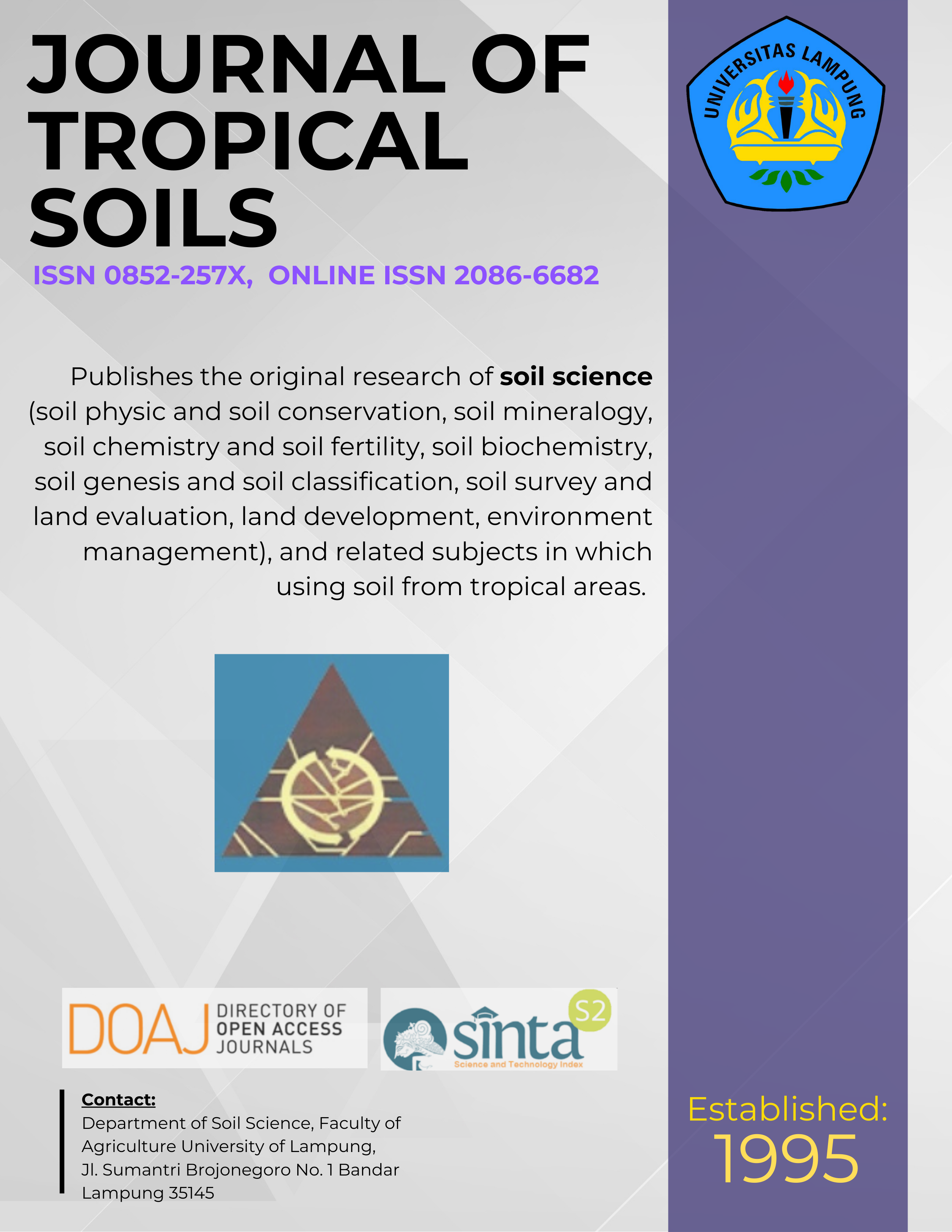Relationship between depth of soil moisture assessment and turgidity of coffee plant in selected agroclimates
Main Article Content
Abstract
Observation on the relationship between the depth of soil moisture assessment and turgidity of coffee plant has been carried out at 3 different agroclimates by survey method, i.e. Andungsari experimental station (Andosol soil type, >1.000 m asl. high, and rainfall type of C), Sumberasin experimental station (yellowish-red Mediterranean soil type, 450-500 m asl. high, and rainfall type of C, and Kaliwining experimental station (low humic glei soil type, 45 m asl. high, and rainfall type of D) in order to assess the depth of soil moisture through soil profile influencing turgidity of coffee plants at three different agroclimates.   The method of assessment is by fitting the relationship between the depth of soil moisture assessment and turgidity of coffee plant and their determination coefficients through the period of dry season up to early rainy season.  Plant turgidity is evaluated from its relative water contents of the leaves sampled periodically at the same time as observation of soil moisture content. Plant turgidity is affected by soil moisture condition up to a certain depth which looks to be typical of the agroclimates. At Andungsari experimental station (high land) it is necessary to assess soil moisture through the soil profile up to 100 cm deep in order to evaluate water stress of the plants; inversely, at Kaliwining experimental station in order to evaluate water stress of the plants it is just justified from the soil moisture condition of the soil surface layers (0-25 cm). Whereas at Sumberasin experimental station water stress of the plants could be predicted from soil moisture assessment of the surface layer depth or through the deeper layers of the soil profile either. Andungsari-1 and Lini S-795 clones are more resistant to drought than Kartika-2 clone at Andisol soil type with C rainfall type and elevation > 1000 m asl.  BP-308 clone showed its response as relatively resistant to drought at yellowish red Mediterranean soil type with C rainfall type at elevation around 500 m asl.  Robusta coffee clone with no name at Kaliwining experimental station showed wilting sign, reduction of its turgidity, and falling leaves during the dry season, and positively responding to soil moisture increase.  An effort to maintain plant turgidity with increasing soil water stress could be done by managing atmospheric demand to be lower. Practical implications of the findings might be discussed a bit more deeply in this paper.Â
Downloads
Article Details
Issue
Section
License for Authors
Authors who publish with this journal agree to the following terms:
- Authors retain copyright and grant the journal right of first publication with the work simultaneously licensed under a Creative Commons Attribution License that allows others to share the work with an acknowledgement of the work's authorship and initial publication in this journal.
- Authors are able to enter into separate, additional contractual arrangements for the non-exclusive distribution of the journal's published version of the work (e.g., post it to an institutional repository or publish it in a book), with an acknowledgement of its initial publication in this journal.
- Authors are permitted and encouraged to post their work online (e.g., in institutional repositories or on their website) prior to and during the submission process, as it can lead to productive exchanges, as well as earlier and greater citation of published work (See The Effect of Open Access).
License for Regular Users
Other regular users who want to cite, distribute, remix, tweak, and build upon author’s works, even for commercial purposes, should acknowledge the work’s authorship and initial publication in this journal, licensed under a Creative Commons Attribution License.

